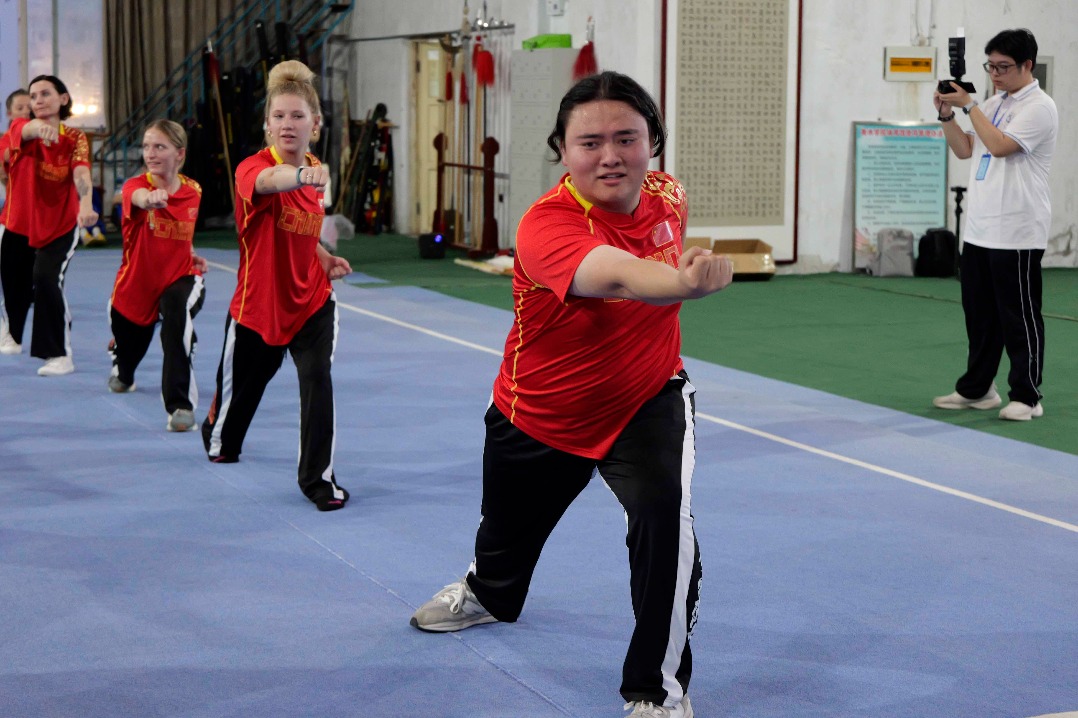AI-driven system helps cut copyright disputes in Textile City

Thanks to an intelligent review system, Keqiao, a district in Shaoxing, East China's Zhejiang province, has seen a significant decline in copyright disputes over fabric patterns in the past three years, according to the local court.
China's Textile City, the world's largest textile distribution hub located in Keqiao, handles about a quarter of the global fabric trade and exports textile products to more than 190 countries and regions. The bustling business also sees frequent disputes related to fabric patterns, said Li Zisu, vice-president of the Keqiao District People's Court.
She revealed that between 2008 and 2020, more than 5,000 merchants were involved in pattern-related lawsuits, and said that the biggest challenge in handling these cases was determining ownership of the pattern copyright.
"Judges often struggled to identify the original creators through manual searches, which were both time-consuming and inefficient," she added.
To address the problem, the court's dispatched tribunal in the textile city, under the guide of the Zhejiang High People's Court, launched an intelligent system for pattern comparison in 2021. It aims to help judges improve the efficiency and accuracy of determining whether a pattern overlaps, constitutes innovation or involves infringement.
Since the system was put into use, the long-standing judicial difficulty of identifying originality, innovation and similarity in pattern copyrights has been effectively resolved. Data released by the tribunal showed that over the past three years, fabric pattern disputes in the textile city have decreased by 91.67 percent. The number of cases heard by the tribunal has also dropped by 33 percent annually.
Li said that with extensive official and high-quality data from the provincial copyright bureau and popular internet platforms, the system has also provided judges and business people easy access to a real-time search through artificial intelligence.
For example, around 38,000 merchants in the textile city can quickly determine copyright ownership of fabric pattern via a WeChat mini-program, which is conducive to avoiding infringement risks for them, she added.
While serving the textile market in Keqiao, she noted that the system has also been applied by 206 courts nationwide, as well as cultural tourism and market supervision departments at city and district levels, in pattern comparison, ensuring that over 900 copyright disputes were resolved before entering litigation.
"During litigation, the system also plays a big role in swiftly identifying and locking in the 'true copyright holder', significantly enhancing the efficiency of handling fabric copyright cases," Li said, adding that its service successfully helped resolve 1,041 copyright disputes in litigation in the past three years, cutting the average resolution time from four months to just one month.
Additionally, the system has been expanded across the country, and its application scope has also been extended from textile patterns to photography, the fine arts and industrial design, according to the tribunal.
- AI-driven system helps cut copyright disputes in Textile City
- Xi urges hard work to build strong China as CPC marks 120th birth anniversary of veteran leader Chen Yun
- Tianjin fines pharma firms, individual over $50m for price-fixing
- Qingdao hosts 2025 Yellow River e-commerce expo
- Typhoon forces cancelations, evacuations in SW China
- Special adjudication team for art auction cases in Dongcheng





































